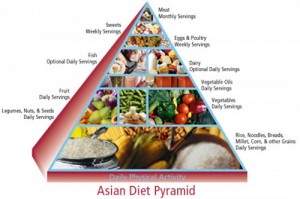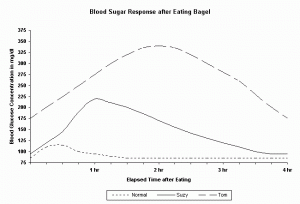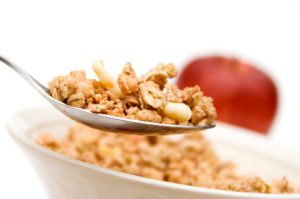What is the best type 11 diabetes diet?
What is the Best type 11 diabetes diet?
The perfect type 11 diabetes diet, is really going to vary from one person to the next.
We are all going to require a slightly different structure in out diets, depending on a few factors, such as
- age
- weight and
- exercise and activity levels.
well these are the main ones. To find out more about your specific requirements, it it best to visit your nutritionist or dietitian and they will help you plan the best diet for your needs.
Maintaining a healthy diet is vital! Especially for diabetes sufferers. It’s important not to skip meals – have 3 ‘well spaced out’ meals a day. This is going to help greatly to control you blood glucose levels and your appetite!
Carbohydrates and Type 11 Diabetes Diet
There are two main types of carbohydrates – There’s Starchy carbohydrates and sugar carbohydrates. When planning your meals, it’s important to incorporate some starchy carbohydrates into each meal. These may include:
- Cereals
- Potatoes
- Breads
- Rice
- Pasta
Always try and include the lower GI (glycaemic index) carbs, as they help to keep your glucose levels down.
Some examples of Lower GI foods to include in your type 11 diabetes diet would be:
- Soy Products
- Some Fruits
- Milk
- Pasta
- Grainy Breads
All carbohydrates are a very important part of a type 11 diabetes diet. Glucose from carbs is also essential to the body’s well being – especially the brain. Carbs high in fibre, like in fruit and wholegrains, are important for maintaining a healthy gut and digestive system.
Important’ Fat Facts’ for a type 11 diabetes diet.
It’s also important, to try and limit the amounts of fat you eat especially saturated fats. Fats contain the most calories, so if you try and eat less fat, it will allow you to lose more weight if you are overweight.
Try and cut out butter, margarine and cheese from your diet – or really try hard to limit the amount you have. (I know for some people that’s hard. Butter is one of my biggest downfalls).
Choose low fat dairy products, like yogurts and milks, reduced fat spreads and cheeses.
There’s actually great news for yogurt lovers, with results from a recent study over an 11 year period, showing those people who loved and ate low-fat fermented dairy products like low-fat yogurts and cheese, were 24% less likely to develop diabetes, compared to those people who ate none. How good is that!
It’s very important to include fish in your diet. At least 2 servings a week is OK, more if you’re a fish lover like me! The oily fish is best, as it is high in omega 3 (polyunsaturated fat) which is great for your ‘heart health’. Best fish to eat are sardines, mackerel, pilchards and salmon.
3 Popular meal ideas for Type 11 Diabetes Diet
Breakfast
- Whisk up an egg with a little low fat milk and sprinkle with a bit of finely grated garlic and cracked black pepper. Cook in microwave for around 1 minute – until the egg is cooked through. Place on top of a slice of wholegrain toast (no butter) and top with a slice of avocado. Yum!
- A small bowl of oats (porridge) cooked with water or unsweetened almond or soy milk in the microwave – toss in a generous sprinkle of cinnamon for taste or top with a small serve of berries.
- Try this one – Mix half a cup of low fat Greek yogurt with about the same amount of un-toasted, natural muesli. Top with some berries or a little sliced mango. My whole family love this!
Lunch
- Cook up some quinoa, and throw in a few veggies, like chopped capsicum, some finely chopped beans, red onion and tomato, actually whatever is in your fridge – I often use red cabbage, celery and even a few grapes or strawberries, just to add a little sweetness and interest. Mix in a good squeeze of lemon and a little olive oil. Top this with some canned salmon, or tuna and a good sprinkle of chopped parsley. Keeps me going and gives me heaps of energy!
- Whole wheat wraps – spread with a little hummus, top with some chopped grilled chicken breast – (no skin remember) some sundried tomatoes, feta cheese and a heap of leafy greens.
- For something lighter, just try some whole wheat crackers, add some hummus or a little tahini (this is a sesame seed spread – tastes like peanut butter!) add some tomato and cucumber, topped with canned tuna and some cracked black pepper.
Dinner
1. Bake some sweet potato in the oven with just a quick spray of olive oil, once cooled, add to some leafy greens, feta cheese, toasted pine nuts and grilled chicken. A nice squeeze of lemon juice over the top, will add a nice ‘tang’ to this meal.
2. Grilled veggie stack with (capsicum, eggplant, red onion, ) and a nice serving of good quality steak, just seared to your liking in a little olive oil.
3. Wholemeal pasta with basil pesto – Boil up some pasta in a saucepan with water and a tiny splash of olive oil. (This prevents it from sticking together) Then mix up together (in a kitchen wiz) a nice bunch of fresh basil, a quarter cup of pine nuts, 2 cloves of garlic and a good soaking of olive oil. I also add some lemon juice for that extra tang. Combine this with a nice piece of grilled fish or chicken. This is always a quick and easy favorite of mine, and what’s left over, you can always have for lunch the next day. Too easy!
If you want to control your diabetes and even reverse it, fad diets are not the answer. You will have to adapt to a good healthy eating plan, for the rest of your life. Include some of these type 11 diabetes diet suggestions with plenty of exercise and you’re well on the way!





